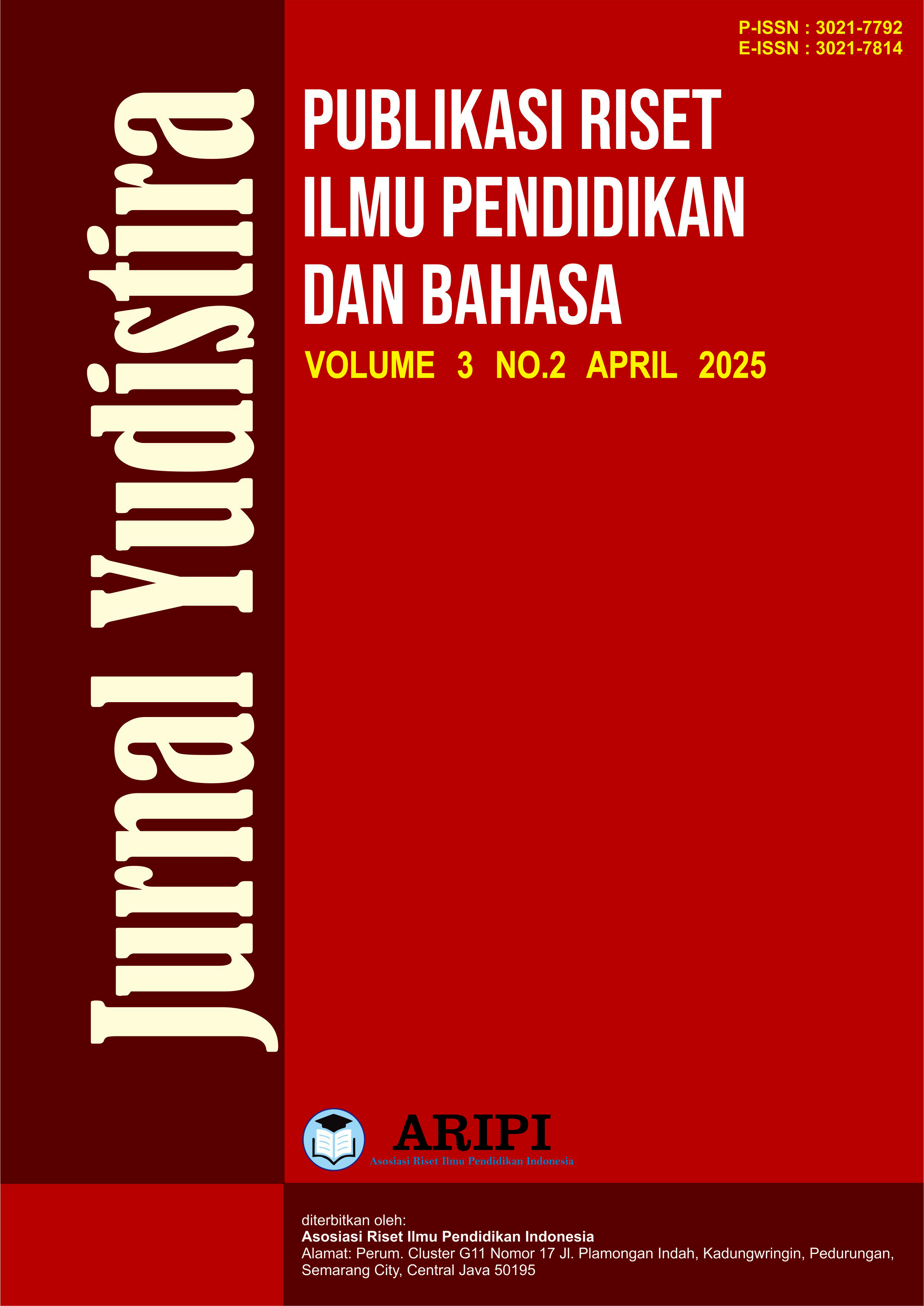Sejarah Perkembangan dan Kedudukan Bahasa Indonesia
DOI:
https://doi.org/10.61132/yudistira.v3i3.2038Keywords:
Indonesian Language, History, Position of Indonesian, National IdentityAbstract
Indonesian has a long historical journey as a means of communication as well as a symbol of national identity. This study discusses the dynamics of the development and position of Indonesian using the library research method. Library research used in this study can be in the form of books, articles and journals, which are based on various historical references and academic studies. Originating from the Malay language which has long functioned as a lingua franca in the Nusantara region, Indonesian was then inaugurated as a unifying language through the Youth Pledge in 1928 and was confirmed in the 1945 Constitution as the state language. The discussion also covers the important role of Indonesian in various sectors, such as the world of education, government bureaucracy, mass media, and the realm of technology. Based on the results of the literature review, it can be concluded that Indonesian plays a role not only as a means of communication, but also as an important element in the formation of national identity and the integration of a pluralistic society. This study emphasizes that the existence and function of Indonesian continue to develop in line with social change and progress.
Downloads
References
Bangun, M. A., Nasution, M. F. A., Sinaga, N. R., Sastra, S. F. D., & Khairani, W. (2024). Analisis Pengaruh Media Sosial Terhadap Perkembangan Bahasa Indonesia di Era Globalisasi. Jurnal Bahasa Daerah Indonesia, 1(3), 9. https://doi.org/10.47134/jbdi.v1i3.2646
Budiman, B. (2022). Pemanfaatan Media Sosial sebagai Media Pembelajaran Bahasa Indonesia. EUNOIA (Jurnal Pendidikan Bahasa Indonesia), 2(2), 149. https://doi.org/10.30821/eunoia.v2i2.2098
Hikmah, A., Samhayatma, A. A., Hermawan, M. A., & Suwandi, S. (2023). Keterampilan Berpikir Aras Tinggi Asesmen Standardisasi Pendidikan Daerah Mata Pelajaran Bahasa Indonesia. Fon: Jurnal Pendidikan Bahasa Dan Sastra Indonesia, 19(1), 102–115. https://doi.org/10.25134/fon.v19i1.6327
Julia, M., Siti Aisyah, D., & Karyawati, L. (2021). Analisis Program Rebo Nyunda Untuk Mengenalkan Budaya Sunda Pada Anak Usia Dini. Early Childhood: Jurnal Pendidikan, 5(2), 118–129. https://doi.org/10.35568/earlychildhood.v5i2.1350
Juni, N., Maya, D., Siregar, S., Sembiring, E. B., Tarigan, L. E., Gabe, Y., & Sijabat, M. (2024). Kajian Eksistensi terhadap Bahasa Indonesia sebagai Bahasa Persatuan dan Bahasa Negara di Era Globalisasi di nusantara pada zaman Sriwijaya dan Majapahit . Menurut Prof . Dr . Slametmulyana salah satu sintaksis sehingga Bahasa Melayu tersebut mudah untuk . 3(2).
Mamonto, S. (2023). Sejarah Perkembangan Bahasa Melayu Menjadi Bahasa Indonesia. Journal on Education, 5(3), 6465–6470. https://doi.org/10.31004/joe.v5i3.1429
Muyassaroh, M. (2020). Pemartabatan Bahasa Indonesia Melalui Pemakaian Kalimat Bahasa Indonesia Standar Mahasiswa dan Dosen IAIN Tulungagung. BELAJAR BAHASA: Jurnal Ilmiah Program Studi Pendidikan Bahasa Dan Sastra Indonesia, 5(1), 91–110. https://doi.org/10.32528/bb.v5i1.3031
Pratama, R. K. (2018). Bahasa, Negara, dan Kekuasaan: Struktur-Kultur Politik Kebijakan Bahasa Indonesia. Diksi, 26(2), 156–161.
Rahardjo M. (2004). Politik bahasa dan bahasa politik Mudjia Rahardjo. Ulul .Albab, 5(1), 83–107.
Sarumpaet, R. K. T. (2009). Pedoman Penelitian Sastra Anak.
Umiyati, M. (2016). Fungsi Predikatif Intransitif Adjektiva Bahasa Indonesia. RETORIKA: Jurnal Ilmu Bahasa, 2(1), 192–209. https://doi.org/10.22225/jr.2.1.359.192-209
Downloads
Published
How to Cite
Issue
Section
License
Copyright (c) 2025 Jurnal Yudistira : Publikasi Riset Ilmu Pendidikan dan Bahasa

This work is licensed under a Creative Commons Attribution-ShareAlike 4.0 International License.






